Tirthajani Panda
Within the burgeoning discourse on human rights, domestic violence against women is increasingly viewed as a serious violation of human rights subject to legal intervention. The societal responses to domestic violence have focused, to date, primarily on crisis intervention after the harm has occurred. While crisis intervention is a necessary response to domestic violence, it alone cannot address the complex dynamics of domestic violence.

Evolving International Human Rights System
Human rights have made a great deal of progress as moral and legal force since the Universal Declaration of Human Rights was adopted by the United Nations (UN) on December 10, 1948. The Declaration, which was written by Eleanor Roosevelt, chair of the UN Commission on Human Rights, and 17 other international delegates, is the primary international articulation of the fundamental and inalienable rights of all human beings. The Declaration is not only the point of departure for all human rights treaties that followed; it has truly become the singly most meaningful human rights document around the globe. The Declaration consists of 30 different articles that enumerate a wide range of fundamental and inalienable rights to which all human beings are entitled. The Declaration states that “all human beings are born free and equal in dignity and rights”, and it declares that everyone is entitled, without distinction of any kind, to the various rights articulated in the Declaration.The Declaration was not intended to be a legally binding document.
The first step toward implementation of the Declaration was the creation of specific treaties to deal with some of the main principles outlined in the Declaration. The International Covenant on Civil and Political Rights (ICCPR) and the International Covenant on Economic, Social and Cultural Rights (ICESCR), for example, were adopted by the UN General Assembly in 1966, and they were drafted and adopted as legally binding international treaties meant to ensure protection of the rights proclaimed in the Universal Declaration. These two treaties are broad in scope. Others are more specific, such as convention on the elimination of discrimination on the basis of race or gender, and on the right of the child. The standard method of enforcing human rights treaties is a reporting system. Governments are obliged to report periodically on their human rights practices and then must defend their records in front of an international body that can put diplomatic pressure on them to comply.
A major international treaty on women’s rights was adopted in 1979 by the UN General Assembly: Convention on the Elimination of All Forms of Discrimination against Women (CEDAW). CEDAW, in fact, is the first comprehensive human rights treaty to address women’s rights. CEDAW comprises of 30 articles, and provides a universal definition of discrimination against women. The treaty covers a wide range of issues, including maternity leave, pregnancy-related health care, property rights, and affirmative action for women in education and employment. The treaty also provides a legal framework for nations to eliminate gender discrimination. Till today, 170 countries have ratified CEDAW.
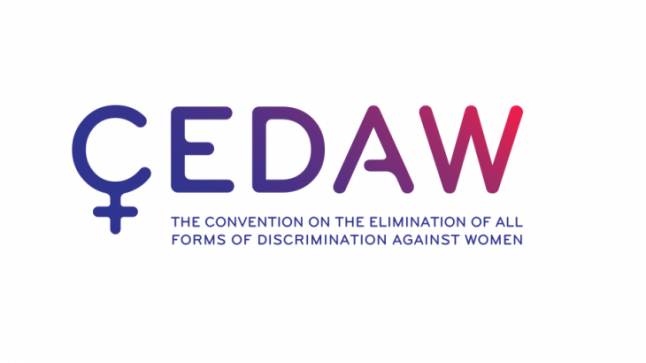
In the 1990s, women’s rights have been further defined and expanded through negotiations at six major world conferences. The recognition of the fact that human rights are crucial for women’s well-being, women’s organizations continued to focus on the global stage some of women’s most basic rights, including freedom of movement, freedom to work outside of the home, right to bodily integrity and freedom from violence. It was the violence against women issue, especially domestic violence, which finally drew wide international attention to the idea that women’s rights are human rights. In fact, women’s human rights became the most dramatic agenda item at the 1993 World Conference on Human Rights held in Vienna, Austria. The 1995 UN World Conference on Women held in Beijing, China, reaffirmed the conclusions of the Vienna Conference and put women’s human rights even more firmly on the world agenda.
In June 2000, the UN General Assembly reviewed the implementation of the Beijing Platform (Beijing +5) and reaffirmed government’s commitment to work for the realization of women’s rights. The new document (Women 2000/Beijing +5 Outcome Document) reaffirms the 150-page Platform for Action at the landmark 1995 UN Women’s Conference and moves forward with tougher measures to combat domestic violence and trafficking of women. The Outcome Document calls for prosecution of all forms of domestic violence, now including marital rape. The traditional practices of forced marriage and honor killings are addressed for the first time in an international document.
Although these documents and programs of action do not have the status of international law, they carry political and moral weight as policy guidelines for the UN, governments, and other international organizations. Women’s organizations can use these documents to hold governments and the UN accountable.
All these conferences provided opportunity and space for public assessment and discussion of the critical areas of concern. They reaffirm the commitments of women’s movements that have placed women’s empowerment and rights on the international agenda. There is now a clear recognition that women will never gain dignity until their human rights are respected and protected. Strengthening families and societies by empowering women to take greater control over their own destinies cannot be fully achieved unless all governments around the globe accept their responsibility to protect and promote internationally recognized human rights. Empowering women is also critical to promoting democracy. The challenge, however, is to develop strategies to grant basic rights to women and enable them to choose how to exercise those rights. This is especially important because the gap between principles and practices defines the central dilemma of human rights.
In order to improve institutional effectiveness, the international human rights system has been rapidly evolving. In recent years new roles have evolved for the UN, especially through the creation of the office of the High Commissioner of Human Rights. Within the Human Rights Commission, new thematic mechanisms (such as special rappoteurs and working groups) have emerged. New avenues have opened for individual communications, as reflected in the recently adopted Optional Protocol to the Convention on the Elimination of All Forms of Discrimination against Women (CEDAW). New forms of redress are being developed – including international prosecution against individuals and against corporations.

There is clearly room for additional reform of the UN mechanisms to ensure effective institutions and stronger means of enforcement. However, the international human rights norms have had, in fact, a demonstrable and positive effect on the behaviour of states toward their citizens. Thus, significant strides have been made; both on a global scale through the United Nations and its agencies and on a regional level through the proliferation of human rights interest groups and non-governmental organizations around the globe.
There has been a paradigm shift in the vision of human rights discourse. Now, the scope of the human rights vision has been broadened to include non-state actors (e.g., individuals, corporations, financial institutions and third-party states), in addition to the traditional state-centric paradigm. In an era of globalization where the world economy is increasingly being integrated, moving beyond a state-centered view of human rights to include non-state actors has a potential to hold non-state actors accountable for violations of social and economic rights. However effective implementation still rests with states, who as signatories to international conventions are duty bound to protect, fulfill and promote rights. Though for some states human rights are still contentious, there has been a dramatic progression in the acceptability of rights with the number of states ratifying core conventions rising from 10 percent to more than half in the last decade. This increasing acceptability of all rights including political, civil, cultural, social and economic has made inroads into current thinking on development policy and practice.
Rights-based Approach to Development
There has been a paradigm shift in the development discourse, from a welfare-based approach to development to a rights-based approach to development. Unlike the centrality of ‘economic efficiency’ in the welfare-based approach, the rights-based approach reflects a global consensus on the centrality of human dignity and equality in social and economic life and the non-negotiable accountability of states for fulfilling their obligations. The Human Development Report 2000 shows that human rights and human development are inextricably linked and mutually re-enforcing. They take root and grow in diverse societies. They expand capabilities by protecting rights. This understanding has contributed to the development of people centered sustainable development.
This revolution in the discourse of development is strongly influenced by the writings of Amartya Sen, the winner of Nobel Prize in Economics. First, Sen illustrates that human values are not always analogous to preference-satisfaction, and provides a critique of utility/welfare. Second, Sen has had a long-held conviction that violation of rights and freedom is inimical to socio-economic development. Finally, Sen has combined these two strands effectively in his recent book, Development as Freedom. Sen argues that freedom properly understood is the appropriate normative framework by which to understand global issues of development. At the heart of Sen’s extensive writing in moral philosophy and development economics is the idea that the ability to survive is a substantive freedom. He focuses on a person’s “capabilities” or substantive freedom of people ‘to lead the lives they have reason to value and to enhance the real choices they have’. These freedoms include the ability to acquire sufficient food, freedom from disease and ill treatment, access to education, freedom from social exclusion, freedom to participate in the life of the community, and freedom from unemployment. According to Sen, the success of development must be assessed by the achievement of such freedoms. In fact, development is the result of the exercise of these freedoms.

Sen further argues that substantive freedoms are supported by instrumental freedoms, such as economic opportunities to use resources, political choices about laws, social questions about arrangements of health care, the security of a social safety net, etc. The effectiveness of freedom interrelates with one another, and freedom of one type may greatly help in advancing freedom of other types. More importantly, Sen argues that individual freedom is a social commitment: that substantive freedom is extremely contingent on personal, social and environmental circumstances; and that the exercise of such freedom is inseparably linked to social, economic and political institutions.
According to Sen, expansion of freedoms is both the definition of development and the means to achieve it. The ultimate aim of development is enlarging the capabilities of all human beings. What are really important for people are the freedoms associated with human rights, he argues. In May 2001, the United Nations Committee on Economic, Social and Cultural Rights reaffirmed this view in a forceful statement arguing for a better integration of human rights in development strategies. The Millennium Development Goals calls for the adoption of policies, programmes and strategies informed by a rights-based approach. The Millenium Declaration requires answers to pertinent questions relating to how targets are achieved, and who are affected by improvements. The UN organizations such as United Nations Development Programme (UNDP), United Nations Children Fund (UNICEF), and United Nations Development Fund for Women (UNIFEM) are increasingly becoming committed to follow a rights-based approach.
The international bilateral and multilateral non-government organizations such as OXFAM, CARE, and DFID have come out with plans and strategies with a rights-based approach in their development work. The international financial organizations like International Monetary Fund (IMF) and the World Bank have some commitments to adopt a rights-based approach. For instance, poverty, according to the World Bank’s World Development Report 2000/2001, is “more than inadequate income or human development – it is also vulnerability and lack of voice, power, and representation”. Also, World Bank’s “Voice of the Poor”, which is based on extensive consultations with thousands of poor people around the world, concludes that dependency, lack of power and voice are the core elements of poor people’s definition of poverty (Narayana, et al., 2000). The Poverty Reduction Strategies Papers (PRSPs) include human rights issues for some countries like Nicaragua, Rwanda, Bolivia, Cambodia, Camaroon, Tanzania, Uganda and Vietnam. According to some critiques, the approaches of the IMF and the World Bank are not strictly in line with a rights-based approach.
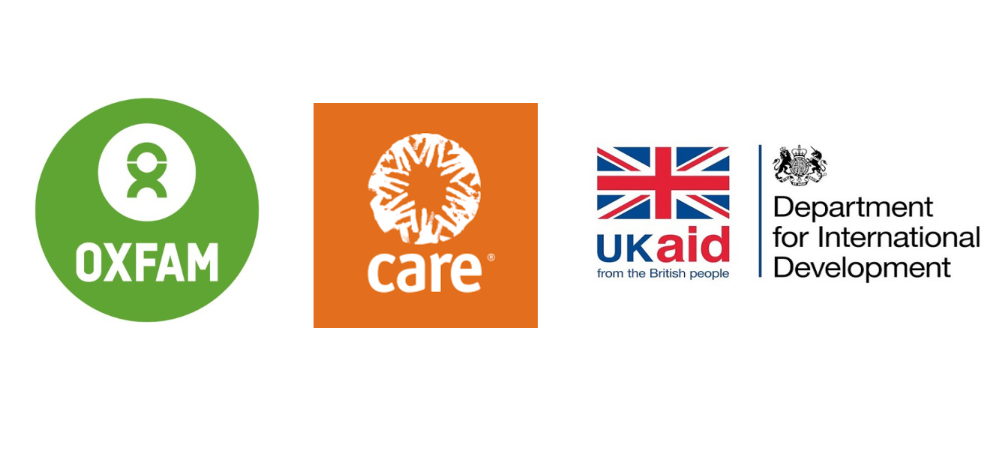
All these developments indicate that a new dialogue is taking place between development and human rights experts. Today, it is widely recognized that the path of human dignity runs not through imposed technocratic solutions or imported foreign models or assumed tradeoff between development and rights. Health, education, housing, fair justice and free political participation are not matters of charity but rather matters of right. This is what is meant by “Rights-based Approach”. This refers to a participatory, empowering, transparent, accountable and non-discriminatory development paradigm that is based on universal, inalienable human rights and freedoms.
The rights-based approach to development is based on the central premise that development policies and programmes should be based on norms and values enshrined in the international human rights law. As compared to other development approaches, the idea of legitimacy in international law, with the principles of equity and justice, provides an added value to a rights-based approach.
The essence of rights is that they are empowering. Rights are transformatory: people are able to take their own decisions as actors or rights-holders by transforming rights to entitlements. And it is the obligations of the state and non-state duty-bearers to respect, protect and fulfill all human rights. The duty to respect requires the duty-bearer not to breach directly or indirectly the enjoyment of any human right. The duty to protect requires the duty bearer to take measures that prevent third parties from abusing the right. The duty to fulfill requires the duty-bearer to adopt appropriate legislative, administrative and other measures for the full realization of human rights.
The rights-based approach to development is based on the international principles of non-discrimination and equality, and participation. The principle of non-discrimination requires that laws and institutions, at local, national and international levels, that foster discrimination against specific individuals and groups (e.g., vulnerable, marginal, and disadvantaged or socially excluded) be eliminated. It calls for a broader strategy that addresses socio-cultural and political-legal institutions. The principle of participation requires active and informed participation by the people, including the socially excluded, in the formulation, implementation and monitoring of development policies and programmes. Participation is recognized not just as a means to other ends but also as fundamental human rights that should be realized for its own sake. The rights based approach places equal emphasis on accountability on part of the duty holders (state and inter-governmental organizations).
The rights-based approach also recognizes the interdependence or complementarity of rights. For instance, right to participation may depend on right to association, right to assembly, freedom of expression, right to information, right to education and right to employment. Since all rights are equally important, the rights-based approach recognizes the crucial interdependence of economic, social and cultural rights, on the one hand, and civil and political rights, on the other.

Keeping in mind the resource and other constraints in many developing countries, the rights-based approach allows for progressive realization and prioritization of rights over a period of time. In other words, governments can set benchmarks and priorities in participatory consultation with citizens. At the same time, it emphasizes that all countries have to provide a ‘minimum core obligation’ of all human rights to protect socially excluded people against retrogression and non-fulfillment of this minimum core obligation.
In the new millennium, human rights issues are taking on a new focus. First, economic and social rights are becoming of paramount concern as the link between an adequate standard of living and the enjoyment of other basic rights becomes more apparent. Second, there is an increasing realization that many groups in society require a higher level of protection than society as a whole. These groups are children, women, and indigenous groups, among others. The rights-based approach can be conceived as a pre-condition for women’s empowerment.
To re-iterate the essence of rights is that they are empowering. Rights are legally-binding entitlements, not charity. Rights are legitimate claims. The rights perspective is transformatory as it transforms needs into rights and responsibilities. The state and non-state actors have legal obligation to respect, protect and fulfill those rights. So, rights empower women. Empowerment promotes the exercise of meaningful choice by enhancing capabilities. It recognizes that women are active agents in solving their problems. It is also important to realize the interdependent nature of rights. For example, enacting and implementing equal opportunity laws will help empower women to gain equitable access to resources, liberating individual initiative and creating economic opportunities. Legislating against gender discrimination will enhance the capabilities of women by giving them better access to credit and productive resources, property and inheritance rights and improved political participation and representation. In other words, supporting and enacting a rights-based approach to the needs of women can not only end discrimination against them but also empower them. Women’s empowerment, in turn, is linked to the well-being of children, family and society.
A recent study has found that countries that promote women’s rights and increase women’s access to resources and education have lower poverty rates, lower child and infant mortality, improved nutrition, lower fertility rates, lower AIDS prevalence, less corruption, higher economic productivity and faster economic growth than countries who do not. Most of the principles of a rights-based approach to development mentioned above are vital for protecting women from violence. For instance, the critical elements of a rights-based strategy in the prevention of domestic violence are the following: non-discrimination and equality; dignity of the person; the understanding that all rights are interconnected and interdependent in their realization; the participation of women in the determination of issues affecting them.
Domestic Violence as a Human Rights Issue
Violence against women, including domestic violence, is a human rights abuse. It exists in every country and culture in epidemic proportion, and is disproportionately committed against women. The irony is that international human rights instruments and many domestic laws prohibit and condemn such violence.
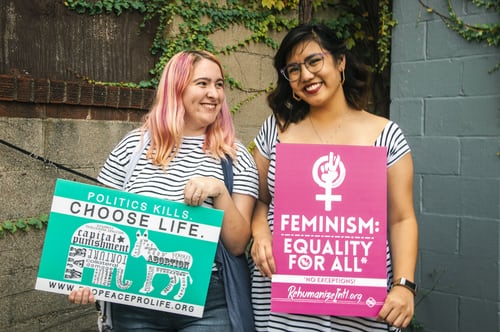
Women experience violence in both conflict and non-conflict areas. In civil conflict areas like Kosovo, Rwanda, Sierra Leone and East Timor, sexual violence has been used as a means of domination and control over ethnic populations by military and paramilitary forces. Women in refugee camps also suffer from rape and sexual violence. Further in conflict and post-conflict societies domestic violence is widely prevalent.
In non-conflict areas there is an epidemic of violence against women. Population-based surveys from a range of countries indicate that 10 to over 50 per cent women report physical assault in intimate relationship. Of these women 33 to 50 per cent also report sexual abuse or coercion. Moreover, discrimination in the enforcement of law, denial of equal opportunity in education and employment, exclusion of women from political representation, and the use of physical and psychological violence to intimidate and subordinate women in public spheres all constitute violations of the right to gender equality.
The effect of such violence is devastating. It not only harms the woman, it destroys the family, limits a community’s workforce, and perpetuates an atmosphere of fear, insecurity, and impunity. It also is connected to other devastating human rights abuses such the suppression of the right of speech, association and more importantly liberty. Violence against women has also significant impact on health of the woman and community. For example, violence against women is now recognized as a lead factor in the spread of the Human Immunodeficiency Virus (HIV), which invariably results in the Acquired Immune Deficiency Syndrome (AIDS). Progress against HIV requires that women are able to protect themselves against all forms of violence, including domestic violence, rape, and sexual abuse. The disease has also placed many women at greater risk of further violence.

The roots of violence against women are located in the unequal balance of power between men and women. The low value some cultures assign to women and girls and the norms that discriminate against women contribute to violence and prevent women from defending themselves. Unequal access by women and girls to education, economic resources, and decision making authority are the central outcomes of gender inequality and this limited access undermine the ability of women to negotiate both public and private acts of violence. Overall the denial of equal rights to women through cultural and social norms and practices in fact perpetuates and reinforces violence against women.
The recognition of violence against women, and specifically domestic violence, as a human rights violation is first articulated in Vienna Declaration and Programme of Action adopted at the 1993 United Nations World Conference on Human Rights. Although CEDAW does not explicitly address violence against women, it recognizes that discrimination is a root cause of violence against women and that the denial of equal rights to women reinforces and perpetuates violence against women. The UN Convention to Eliminate Violence Against Women is the first protocol to specifically focus on the full continuum of violence experienced by women.
Fundamentally the human rights approach focuses on those whose rights are being violated, allowing developing solutions that keep victims experiences and needs at the forefront. International standard continue to evolve in recognition of the pervasive nature of violence against women under circumstances ranging, for example, from domestic violence, to coercive sex work, to rape as a weapon of war. There are three critical approaches within the rights framework that have contributed enormously to facilitate the placing of domestic violence on the international and national agendas – namely due diligence, equal protection and domestic violence as torture. These three distinct legal approaches are discussed below.
Legal Approaches to Domestic Violence
Under international human rights law, the concept of state responsibility has been enormously expanded. The state now has a dual role to play. First, the state should not indulge in human rights violations. Second, more importantly, if violations occur in the private spheres, the state has a clear obligation to prevent those violations and protect the victims. Currently, there are three approaches of state responsibility for dealing with the issue of violence against women by private actors.

Due diligence
The legal concept of “due diligence” describes the minimum effort a state must undertake in order to fulfill its responsibility to protect individuals from abuses of their rights. The committee charged with overseeing implementation of CEDAW in 1992 adopted General Recommendation 19 which emphasizes that “States may also be responsible for private acts if they fail to act with due diligence to prevent violations of rights or to investigate and punish acts of violence, and for providing compensation”.
In 1993, the United Nations Declarations on the Elimination of Violence against Women (DEVAW) also calls on States to “pursue by all appropriate means and without delay a policy of eliminating violence against women” and further to “exercise due diligence to prevent, investigate and, in accordance with national legislation, punish acts of violence against women, and whether those acts are perpetrated by the State or by private actors”.
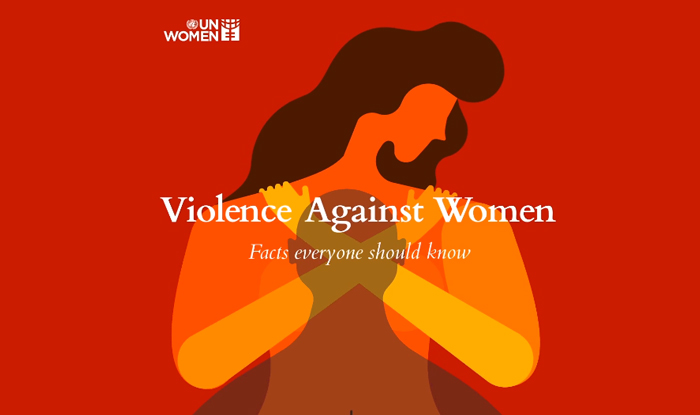
Equal protection of the law
This approach is based on the principle of the equal protection of law. If discrimination in law enforcement is demonstrated in case of violence against women, then the State may be held liable for violating international human rights standard of equality. For instance, Article 26 of the ICCPR provides that “all persons are entitled without any discrimination to the equal protection of the law”. This has then led the basis for states addressing victims of domestic violence, a group usually outside law enforcement. Here lies the significance of the Optional Protocol to the CEDAW which was adopted in 1999. The proposed inquiry procedure under that protocol can be approached, following complaints from individuals or groups. Individual women can bring claims against a government, which fails to take measures to punish or prevent domestic violence. There is provision for international prosecution against individuals who perpetrate domestic violence.
Domestic violence as torture
Convention against Torture defines torture as “an act by which severe pain or suffering, whether physical or mental, is intentionally inflicted on a person” for a purpose such as obtaining information or a confession, punishment, intimidation, or coercion, “or for any reason based on discrimination of any kind”. Domestic violence is a violation of a woman’s rights to bodily integrity, to liberty, and often right to life itself. Therefore, this approach argues that domestic violence is a form of torture, and should be dealt in line with other human rights instruments.
Article 7 of the ICCPR states that “no one should be subjected to torture or to cruel, inhuman or degrading treatment or punishment”. When states fail to provide protections through legislation and other measures, they hold responsibility for the abuse. The failure of a government to prohibit acts of violence against women when they are of the nature and severity envisaged by the accepted definitions of torture constitutes a failure of state protection. Proponents of this approach believe that application of a human rights framework by recognizing domestic violence as torture and by insisting states to fulfill their responsibility to protect women, can be a powerful tool in eliminating violence against women.

These three approaches to address domestic violence suggest that women’s rights groups have been successful in deconstructing the false dichotomy between public-private divide which has so long restricted efforts to put domestic violence in the national agenda. There exist a strong legal case for the reconceptualization of domestic violence as a human rights issue, given the similarity and close parallel between abuse and terrorism. She contends that people or group wishing to terrorize others use three basic tactics: (a) surprise and seemingly random (but actually well-planned) acts of violence, (b) psychological and physical warfare to silence protest and minimize opposition, and (c) the creation of an atmosphere of intimidation in which there is no way to escape. In the similar manner as terror can be directed at a community, it can also take the form of violence perpetrated in a women’s home by her partner. In similar ways to terror, violence is designed to maintain domination and control, to increase advantages, and to defend privileges. She argues that the term terrorism as an alternative to domestic violence carries a connotation of privacy and thus minimizes or diminishes its importance and seriousness.
Thus, significant language now exists to advance the status of women, and it is critical to capitalize on these advances. In recent years, women’s human rights groups are pressurizing governments to implement CEDAW, and take positive measures to end legal, social and economic gender inequality.
Links between Domestic Violence and Social and Economic Rights
Domestic violence is rooted in gender power balance, gender identity, and gender-specific roles and responsibilities. First, since women and men often have different roles and responsibilities, they have different needs and priorities. For instance, women tend to carry the primary responsibility for maintaining household, like collecting water, fuel wood, preparation of food, care for children and elderly. These activities not only increase women’s daily burden of work (time poverty), they also restrict women’s participation in community activities and decision-making processes, employment, physical mobility etc. Further the perceived non-fulfillment of these responsibilities is often a precipitating trigger for domestic violence.

Second, women tend to have limited access to and control over productive resources such as land, house, credit, agricultural extension, water etc. Women’s limited access to land means less access to agricultural extension services, credit and water. Women are particularly threatened by loss of land, house and other property, and ownership rights because of the prevalence of statutory law and other forms of discrimination. This inhibits women’s rights within marriage, leading to threat of divorce and violence against them. Women also face additional obstacles to develop coping strategies.
Third, the pervasive nature of gender-specific violence not only affects the individual victims directly, it also indirectly limits women’s mobility and participation in social, economic and political activities. Women in many societies are afforded little recourse against domestic violence.
Finally, women are far less likely to participate in formal decision-making processes. Unequal control over economic resources not only inhibits women’s autonomy in household decision-making; it also inhibits participation in public institutions and to break the shackles of poverty and deprivation. Gender inequality is the most pervasive manifestation of inequality of all kinds in any society because it typically affects half of the population. Moreover, women more than men in most countries face structural barriers that impede women from having rights, capabilities and capacity to choose. Women also face institutional barriers and discrimination in law. Women’s participation in decision-making are low at all levels. As a result they lack power and voice. Therefore an enabling environment is necessary to remove the structural and institutional obstacles.
Domestic Violence and Health
Women who have experienced physical, psychological and sexual violence are at higher risk of unwanted pregnancy, high risk pregnancy, and adverse pregnancy outcomes and of contacting sexually transmitted diseases including HIV/AIDS. In fact, there is a strong link between domestic violence and HIV prevention strategies. Public health practitioners may educate women about the risks of sex and drug abuse, or, they may even distribute the means for behavioral changes (e.g., condoms and sterile injection equipment). But, if women are physically and psychologically abused by their husbands, they remain powerless to reduce their risk of HIV.
Physical violence leads to injuries, fatal outcomes (less common) and functional disorders (most common) such as chronic pain syndrome, gastro-intestinal disorders etc. Domestic violence leads to stress and stress-related mental illnesses among women such as post-traumatic stress syndrome, depression and low self-esteem. These mental health problems have a higher risk for suicide and suicide attempts.

Violence during pregnancy is an important cause of maternal deaths in India, Bangladesh, and the US. Recent evidence from Nicaragua and India suggests that violence may also directly or indirectly affect child mortality. Numerous studies have revealed how a woman’s sexual and reproductive autonomy may be compromised by her fear or experiences of violence. All these short-term and long-term health consequences of violence across the countries clearly indicate that “right to health” cannot be fully realized without providing adequate protection against domestic violence.
Domestic Violence and Education
Children who witness violence are at a higher risk not only for a range of emotional and behavioral problems, they also exhibit poor performance in schools. Researchers have shown that violence is now established as an influential factor inhibiting the access of girls to education in both South Africa and Jamaica. It is not surprising to argue that if women are routinely being harassed by their husbands, they cannot properly look after themselves and their children, including attending to children’s education and care. Domestic violence is a factor in limiting the realization of right to education for young girls and boys. This is absolutely critical as education is also a protective factor for domestic violence. Increased education of men and women leads to less likelihood of perpetrating and experiencing violence.
Domestic Violence and Participation
Living in a violent relationships affects a women’s sense of self-esteem and her ability to participate in the decision-making processes, both within the households and outside in informal (family and neighbor) and formal social networks (community organization, women’s self-help groups or affiliation with political parties). Violence against women also inhibits political participation. Violence or the threat of violence often hinders women’s ability to use contraception, to answer personal interview questions directly or honestly, or to leave the house long enough to participate in community projects.
Domestic violence sometimes may act as a hindrance to the momentum of community projects. For instance, evidence from micro credit activities in Bangladesh suggests that violence occurs at home due to conflicts in the division of labor and also distribution of money earned by the women participants and their husbands. Due to domestic violence, women stopped participating in a revolving fund of the Working Women’s Forum in India and the project almost collapsed.
Women’s participation in formal and informal social networks has been identified as critical factor in lessening their vulnerability to violence and in their ability to resolve domestic conflicts. Overall, domestic violence impacts self-esteem of women and limits their ability to be conscious agents of change.
Domestic Violence and Employment
Domestic violence may prohibit women to be engaged in gainful outside employment. Domestic violence increases women’s risk of unemployment, affects job performance, and reduces earnings. Low education, low skills combined with restricted mobility will affect the quality of women’s employment. There is some evidence that abused women are more likely to seek work because of the need to secure resources and independent networks. While women’s limited economic independence may inhibit them to escape from an abusive relationship, it is also true that women’s economic activities and independence may be a threat to increased domestic violence.
Domestic violence against women prevents and inhibits women’s ability to realize other rights. For instance, a woman cannot exercise her rights to livelihood, education, mobility, health or participation in governance, if she is prevented from leaving her home under threat of violence or death. Similarly, a woman cannot fulfill her right to choose whether, when or how often she will have children, if she is routinely denied the opportunity to consent to sexual relations, or to choose whether and whom she marries. Clearly, gender violence is a barrier to equality.

Women’s entitlement to economic rights like employment, ownership of assets like land and house, and access to credit will provide women power to exercise their rights. This will change the existing structure and distribution of power. These changes will enhance women’s autonomy in household decision- making, and participation in community activities. The idea is that empowerment attends to power, and power difference is the basis of unequal gender relations. Women’s empowerment could be achieved by enacting and enforcing anti-discrimination laws, providing genuine protection against domestic violence, reducing socio-economic and gender disparities, and altering divorce, property, and estate regulations.
Women’s economic vulnerability is a crucial factor of their powerlessness and voicelessness. Therefore, women’ access to and control over economic resources are believed to be necessary condition to attain social power, autonomy and empowerment. In this context, women’s access to financial services like micro-finance credit schemes is an important factor in enhancing income. Researchers around the globe have demonstrated that women’s ability to control income enhances their empowerment through increased self-confidence, greater power in marital relationships and increased decision-making in the household. Moreover, women use the resources more efficiently than men. Also, women devote a higher proportion of income to family well-being, especially children’s nutrition in her general theory of gender stratification posits that relative economic power, specified as control of strategic resources such as income and property, is the key factor affecting gender stratification at a variety of “nested levels” ranging from the household to the state level.
Women’s ownership of productive assets, especially land, is a very crucial determinant of women’s well-being and empowerment in agrarian societies. Women’s ownership of productive assets can provide them protection against economic shocks and social risks. She also shows that women’s access to social support from the state, kin network and women’s organizations also enhances their bargaining power. Moreover, control over productive assets, social support and control over income are the critical factors for women’s participation in political activities. Therefore, promotion and protection of these critical rights can not only prevent violence against women, they will also empower women. In the long run, the realization of these economic rights along with reduced violence will help advance for overall empowerment.
Strategies
For centuries, states have viewed domestic violence against women as a private matter not relevant to state policy. During the past decade, however, the issue of domestic violence against women has become one of the preeminent issues in the women’s international human rights movement. A large variety of countries now have accepted some responsibility to help prevent violence in the home and to prosecute offenders. To prevent and reduce domestic violence, government, non-governmental and inter-governmental organizations are already working at many levels. The strategies that are being adopted include: home visitation, collaborative efforts of domestic violence service providers, prevention efforts that address violence both in homes and in communities, school-based programs, and public education campaigns.
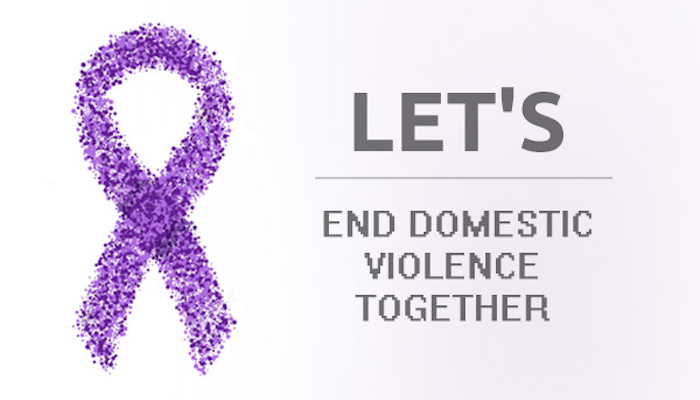
India, like many other countries, has enacted legislation that codifies domestic violence as a crime along with the creation of national media campaigns designed to raise consciousness about the issue, and establishment of women-only police stations intended to encourage reporting of domestic violence crimes. To respond to the needs of the victims, protection and support systems must be available. Religious and social institutions that could assist victims need to be trained in appropriate responses. Since the existing legal framework is inadequate to fully address women’s needs, political advocacy should be mobilized to change particular elements within the laws that continue to be unresponsive to issues of gender-based violence.
In addition to legal and institutional interventions domestic violence needs to be re-situated in social justice and broader social transformation of society. What is needed is a rights-based strategy in the prevention of domestic violence. The strength of a rights-based strategy is that it meshes formal treaty doctrines with grassroots activism and critiques of power. While the right to make the claim is global, the specific and useful strategies to build a non-violent and gender egalitarian society must be developed locally.
If one conceptualizes domestic violence as a violation of a woman’s most basic right, the focus becomes an ecological perspective. It is only at this level of analysis and interventions that the problem of domestic violence has the potential to be eradicated. Domestic violence prevention strategies must include a critical understanding of the underlying causes of domestic violence as well as a vision of what constitutes a healthy, non-violent family.
Research and analysis in this paper clearly suggests that “right to housing” and “right to property and inheritance” are critical and most fundamental for any strategy in the prevention of domestic violence. Empowerment of women is the key to prevent gender-based violence. Access to, and control over economic resources, especially immovable assets, is the precondition to women’s empowerment. Social support network, especially natal family and neighbors, is also a crucial factor in reducing domestic violence. Four points need to be emphasized here:
- Importance of immovable assets and social support is significant in making a difference to the incidence of domestic violence.
- Changing norms of acceptability of violence in the family is critical to reduce inter-generational transmission of violence.
- Male attitudes and society’s attitudes also need to be changed in this regard. Since prevention of domestic violence requires fundamental changes in attitudes and behavior, it confronts societal and individual resistance to change.
- Support structures could be both within the family and from NGOs, women’s self-help groups etc., who can both help in changing attitudes and in helping women acquire immovable assets. This calls for creative community involvement, shared responsibilities, and collective action with the goals to challenge patriarchal assumptions of power and control and entitlement to women.
Prevention of domestic violence at the national level depends on the level of public and governmental commitment to making prevention a long-term priority, and to establish a consistent, coordinated, and integrated approach for each community. Given the pervasiveness and harms of domestic violence, a national policy of zero tolerance for domestic violence is necessary.
(Author is a Ph.D Scholar, Uttarakhand State Open University, Uttarakhand)





















